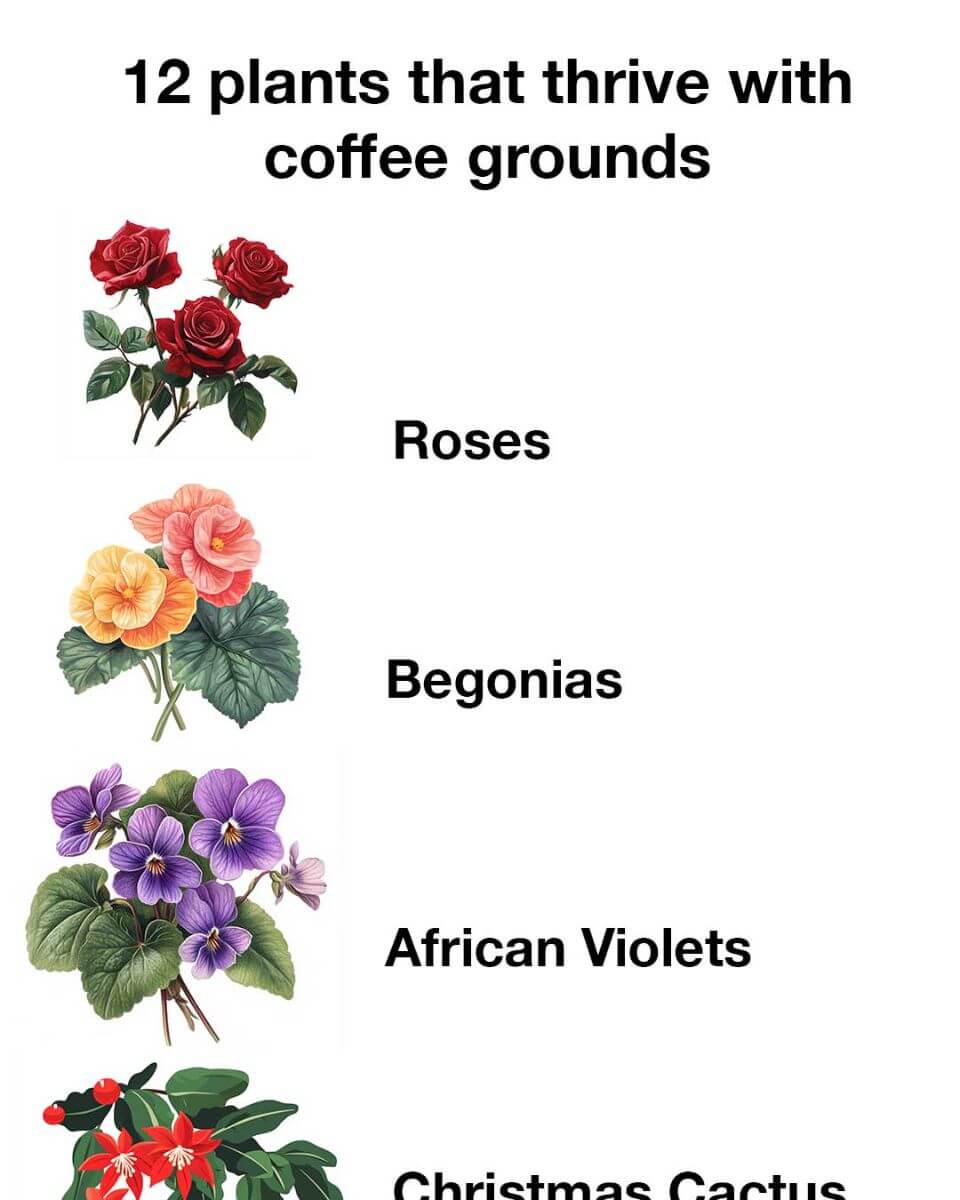Coffee grounds are an excellent and sustainable addition to your gardening routine, offering a natural way to enhance plant growth and soil quality. Instead of discarding them after brewing your morning coffee, repurpose them to nourish your plants. Rich in nutrients and organic matter, coffee grounds serve as a natural fertilizer and soil conditioner. This guide explores how different plants can benefit from coffee grounds and how to use them effectively to cultivate a thriving garden.
Why Coffee Grounds Benefit Plants
Coffee grounds are loaded with essential nutrients such as nitrogen, potassium, and phosphorus—key elements for plant growth. They also contain trace minerals like magnesium, calcium, and iron. Their slightly acidic properties make them particularly beneficial for acid-loving plants. In addition to enriching the soil, coffee grounds improve aeration and drainage while attracting earthworms, which further boost soil health. Another advantage is their ability to deter pests like slugs and snails, acting as a natural pest repellent.
How to Use Coffee Grounds in Gardening
To make the most of coffee grounds, collect them daily or source them from local cafes. They can be sprinkled directly onto the soil in a thin layer or mixed into compost to enhance nutrient content. When applying coffee grounds, avoid piling them too thickly, as this may cause water retention issues. Instead, blend them lightly into the topsoil or mix them with other organic materials. For acid-loving plants, coffee grounds can be used as mulch or a soil amendment to maintain optimal conditions.
1. Roses: Encouraging Vibrant Blooms
Roses respond well to the nitrogen in coffee grounds, promoting healthy foliage and stunning blossoms. Simply sprinkle coffee grounds around the base of the plant and gently mix them into the soil. This method enhances drainage and aeration while delivering essential nutrients to support growth.
2. Begonias: Strengthening Growth and Color
Begonias benefit from the organic matter in coffee grounds, which fosters robust development and enhances their bright flowers. Incorporate coffee grounds into the soil or use them as a light mulch to retain moisture and steadily release nutrients.
3. African Violets: Supporting Lush Leaves
African violets thrive in slightly acidic soil, making coffee grounds a suitable addition. Mix a small amount into potting soil to encourage vigorous leaf growth and vibrant blooms.
4. Christmas Cactus: Boosting Flower Production
This holiday favorite flourishes when given nutrient-rich soil. Mixing coffee grounds into the potting mix can provide an extra boost, leading to healthier growth and longer-lasting flowers.
5. Hydrangeas: Enhancing Blue Shades
If you want deep blue hydrangea blooms, coffee grounds can help. Their acidity lowers the soil pH, which encourages blue flowers. Apply them as a mulch to gradually alter soil conditions and intensify color.
6. Camellias: Creating Ideal Soil Conditions
Camellias, being acid-loving plants, benefit from coffee grounds, which help sustain the right soil pH. Mixing them into the soil or using them as mulch provides the necessary nutrients for optimal flowering.
7. Azaleas: Maintaining Soil Acidity
Like camellias, azaleas require acidic soil to thrive. Incorporating coffee grounds helps maintain soil pH while supplying nutrients that support lush growth and vibrant blossoms.
8. Blueberries: Increasing Berry Yield
Blueberry plants flourish in acidic environments, making coffee grounds an excellent soil amendment. They help lower soil pH and provide essential nutrients, leading to healthier plants and more abundant fruit production.
9. Rhododendrons: Enhancing Soil Quality
Rhododendrons thrive in well-draining, acidic soil. Coffee grounds contribute to maintaining the right pH and add organic matter that improves aeration and nutrient absorption.
10. Gardenias: Supporting Fragrant Blooms
Gardenias, known for their beautifully scented flowers, benefit from the nutrient-dense composition of coffee grounds. Using them as a mulch or soil additive ensures a steady nutrient supply and improved soil quality.
11. Ferns: Providing Organic Nutrients
Ferns appreciate nutrient-rich soil, and coffee grounds help supply slow-release nitrogen, which supports their lush, green foliage. Lightly mixing coffee grounds into the soil can encourage healthy growth.
12. Pothos: Encouraging Robust Foliage
Pothos, a popular trailing houseplant, benefits from coffee grounds’ nutrient content. Adding them to the potting mix or as a top dressing can promote vigorous leaf development and overall plant health.
Conclusion: Making the Most of Coffee Grounds in Gardening
Using coffee grounds in your garden offers numerous advantages for a variety of plants. By understanding which plants benefit most and applying coffee grounds appropriately, you can enrich your soil, encourage healthy plant growth, and even deter pests. Whether used as mulch, compost, or a soil amendment, coffee grounds provide an eco-friendly, nutrient-rich boost to your plants. Experiment with different methods to discover the best application for your garden and enjoy the results of a more vibrant and flourishing landscape.
